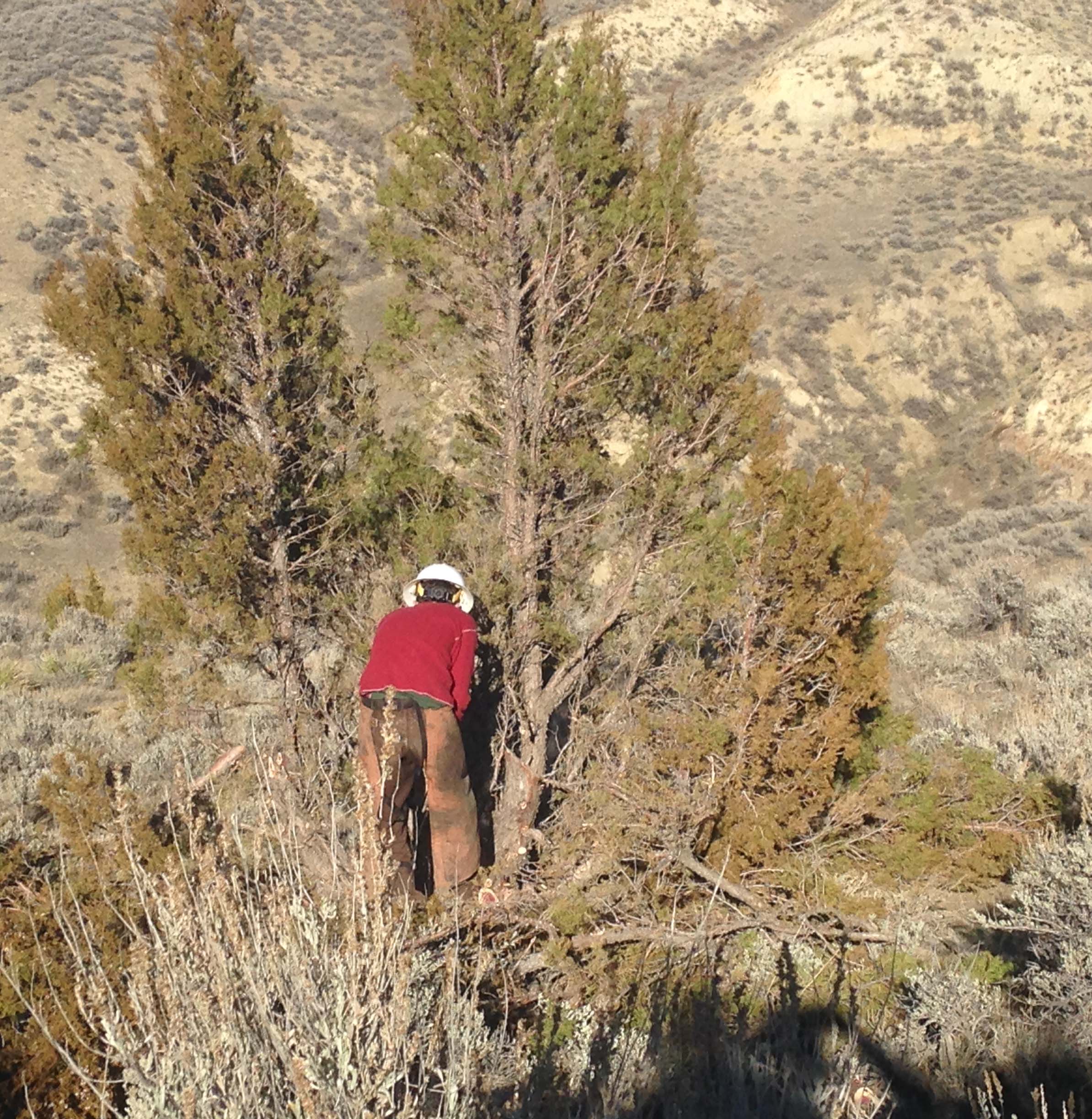
Greater Sage-Grouse by Jeff Birek
For the past century, coniferous trees have been expanding out of their historic stands into sagebrush ecosystems. Their root systems suck up what little moisture is available, outcompeting grasses, forbs and sagebrush as they grow. This reduces forage for livestock and wildlife, including sage-grouse, and decreases the flow of water from springs and creeks, degrading riparian areas. Conifer encroachment will noticeably alter sagebrush ecosystems and, in turn, habitat quality for wildlife.
In November of 2013, Rocky Mountain Bird Observatory, the Bureau of Land Management and Montana Conservation Corps completed a restoration project on BLM land to treat areas of juniper encroachment into sagebrush habitat. The land was located in the Powder River Basin of northeast Wyoming.

A member of the Montana Conservation Corps cuts a juniper. Photo by MCC.
The project began earlier in the year by scouting and identifying areas of encroachment using GIS remote sensing. Focus was given to areas within Greater Sage-Grouse priority habitat, as well as areas where plugging and reclaiming of coal-bed natural gas wells and infrastructure is taking place.
Treatment itself consisted of cutting junipers as close to ground level as possible, then lopping and scattering the remains beneath the height of the adjacent sagebrush. Conifers on steep slopes or within drainages were disregarded because they do not infringe on sage-grouse habitat. Also, old-growth trees, trees with nests and thick clusters of juniper were left untreated because of their benefit for mule deer, birds and other wildlife.
During three days of treatment, from Nov. 5-7, approximately 1,500 stems of juniper were cut on a treatment area of 180 acres inside the watershed. The area will continue to be monitored to evaluate how well treatments control the juniper trees and benefit sage-grouse and other wildlife.
The project was funded by the BLM using Powder River Basin Restoration Initiative funds. Thank you to all of the partners for a successful project!
~ Brandon Elkins, Range Conservationist


